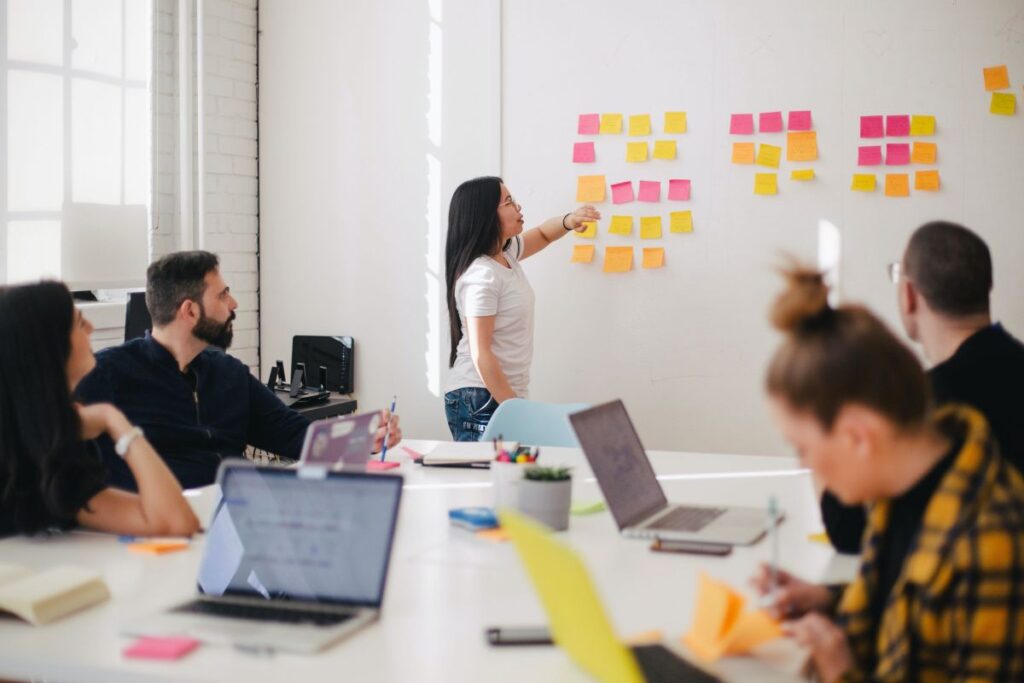
Project-based learning (PBL) is a great way to engage your students in the classroom. It allows them to apply what they are learning to a real-world situation. It also helps them develop important skills such as problem-solving and critical thinking.
There are many different ways to practice PBL, so it can be tough to decide which is right for your class. Here are seven approaches to PBL to get you started.
1. Problem-Solving

Through problem-based learning, students are given a real-world problem to solve. They must brainstorm and develop an effective solution for them to succeed. This method is great for teaching critical thinking skills and helping students learn how to apply what they know to a new situation.
Complex real issues like global warming or the Syrian refugee crisis are perfect for problem-based learning. However, you can also find simpler problems that still require students to think critically, like improving traffic flow in a city or creating a more efficient recycling system.
Coupled with good writing skills attained with assistance from essay help online services, students who participate in problem-based learning perform better. They can communicate with people from all walks of life and come up with new solutions for the most challenging issues.
2. Service Learning
Service learning allows students to use their knowledge and skills to benefit others in need. They learn about an issue impacting their local areas, like homelessness or hunger, and then develop ways to solve it by volunteering at an organization or creating awareness.
Usually, these students work with nonprofit organizations and get first-hand experience. They learn how to be compassionate and empathetic while also understanding their communities’ issues.
They also get a better perspective on what they want in life, inspiring them to pursue careers as public servants or social workers when they grow up. With a world in need of more people who are passionate about helping others, service learning is a great way to engage your students in the classroom.
3. Presentations

Presentations are an excellent way for students to share what they’ve learned with the rest of their classmates and teachers. They can be used in many different ways: as part of a lesson, after completing research projects or reading assignments, or even on their own. With the help of DoMyEssay or other professional writing services, students can create the perfect essay to complement their presentation.
Presentations allow students to develop important skills like public speaking, which will help them throughout their lives.
4. Research
Research is the driving force behind many scientific breakthroughs and technological advancements. It is an integral part of the learning process that helps students develop critical thinking skills.
With research-based learning, students explore their chosen topics and present what they’ve learned in class. This type of learning is perfect for giving them a voice in the classroom and teaching them to think outside the box.
In particular, STEM subjects lend themselves well to research-based learning. Students can find new ways to solve a problem or develop new technology. They can also present their findings at science fairs or competitions, giving them a chance to show off their hard work and learn from others.
5. Inquiry-Based Learning

Inquiry-based learning is another way to get students thinking outside the box. It’s an open-ended question that helps them explore new ideas and challenge their beliefs.
This kind of project aims for students to go beyond what’s been taught in school by conducting independent research. They also learn how to apply critical thinking and develop practical solutions.
The project is a good fit for STEM classes because it challenges students to create solutions in these areas. It helps learners nurture the skills they need to excel in these fields.
6. Creative Projects
Creative projects are a great way to engage students in the classroom and reveal their creative potential.
The options are virtually endless when it comes to creative projects. Here are the popular ones.
- Art projects – have them create a work of art based on a particular theme or using a specific medium.
- Music projects – students can write their songs, create remixes, or interpret a piece of music in their own way.
- Writing projects – have students write a story, poem, song, or play. They can also create a magazine or website.
- Design projects – students can design anything from a logo to product packaging.
- Presentation projects – students can craft visually captivating school presentations by exploring free Powerpoint templates download online. These presentations allow them to showcase their unique ideas and concepts effectively.
The possibilities are endless.
7. Simulations

In a simulation, you are placed in an identical situation to the one that occurs naturally. One must use what they know to complete tasks or solve problems within the simulation. Simulations can be used for any subject.
Simulations can be used to recreate historical events or to model complex systems. The method allows students to get hands-on experience with situations they would never otherwise have access to.
A good example of a simulation is Minecraft, where students can create their own world and experiment with different scenarios. This is an excellent way to learn various topics and have fun doing it.
Takeaway
As is clear from above, educators can use many different kinds of project-based learning to engage their students. It all depends on what you want them to learn and how much time you have available for the class.
No matter what type of project you choose, the most important thing is that it’s enjoyable for students. When they’re excited to do a project, they’ll learn more in the process.








